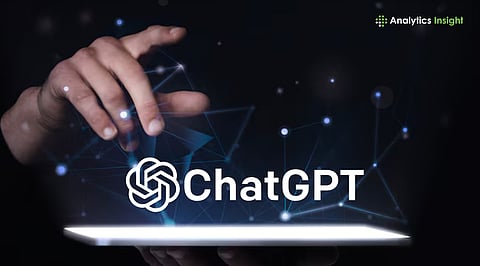

Clear author profiles and structured metadata help improve the recognition of online content.
Reliable sources and authoritative publishing increase the chance of AI citations.
Consistent optimization allows articles to appear more frequently in AI-generated responses.
Modern writers and publishers are now seeking visibility in AI-generated responses. The new ChatGPT citation guide highlights how structured content improves recognition. According to a recent Search Engine Journal report, well-formatted metadata and stable URLs play a significant role in how AI chooses sources, and this shift has amplified competition among creators.
The opportunity has sparked a competitive push to understand how AI citations work and how to position content for maximum recognition, especially as more writers adopt practices such as answer capsules, minimal linking, and original or owned data to enhance source clarity and credibility.
Also Read: Can Researchers Stop AI From Making up Citations?
Reliable websites tend to be cited more often because AI models prioritize sources with strong editorial standards. Publications having verified author pages, transparent ownership, and stable publishing patterns generally get stronger trust signals. According to SEMrush professionals, the documents with proper citations impress the AI datasets.
This pattern motivates authors to follow sourcing and avoid vague or unverified statements, thereby strengthening their citations. The addition of answer capsules, which provide concise and comprehensive information blocks, also facilitates AI systems' rapid identification of reliable content.
Metadata optimization is becoming essential for creators seeking to improve content visibility. Google documentation states that using structured data will enable AI systems to properly classify articles.
This approach improves online content recognition and reduces the risk of content being overlooked. Indian publishers benefit from local language tags, which enable models to address regional search queries. When combined with minimal linking, which keeps pages clean and focused, structured metadata becomes even more effective for citation readiness.
AI systems often select sources that demonstrate depth, clarity, and domain expertise. The rise of AI citations has encouraged writers to adopt a more research-driven approach. Analysts from HubSpot note that long-form content with verified statistics performs better during AI retrieval.
Publications that update posts frequently also gain an advantage because freshness signals are considered important by most automated systems. The document becomes even more valuable for AI models if it includes original or owned data like surveys or internal research, as this information cannot be found elsewhere.
Creators aiming to increase AI citations benefit from publishing schedules that prioritize consistency rather than volume. Industry editors emphasize that quality-driven content tends to outperform content posted rapidly. Websites that use user-friendly layouts and avoid intrusive design improve reader engagement, thereby strengthening trust signals.
This method helps new authors build authority while competing with established platforms in crowded digital spaces. Minimal linking supports a clean reading experience, and answer capsules within the content make key information stand out for AI systems scanning for citations.
Also Read: How to Use Generative Engine Optimization to Boost Your Site's Visibility in AI Searches
The focus on reliable publication and metadata optimisation is an improvement over earlier methods, where visibility was mostly a matter of using the right keywords. The new approach is to build on trust and accuracy, which, in turn, leads to greater sustainability and long-term growth.
The addition of answer capsules, minimal linking, and original or owned data strengthens a publication’s ability to be cited accurately by AI systems. These changes also enable writers to gain recognition across AI tools as they adapt to the digital world. As AI models advance, high-quality and well-organized articles continue to be the strongest path to sustainable visibility.
1. What kinds of questions can an AI can’t answer?
Questions that AI can’t answer involve ambiguity, complex reasoning, and subjective experiences, as current AI struggles with nuanced human concepts like emotion, common sense, and self-awareness.
2. How to MLA cite ChatGPT?
Begin with the full prompt, then the source title, and finally the word prompt. ChatGPT or other generative AI should not be treated as the author under MLA guidelines. Instead, place it after the prompt and include the version number or name.
3. Is there an AI that finds References?
Sourcely is a game-changer for academic writing. It's like a reverse search engine - you input your uncited text, and it finds relevant articles across various disciplines. I've used it for humanities and social sciences papers, and the citations are always on point.
4. How to detect fake references?
Many companies offer fraud checks that can help you identify falsified references. Another option, if you don't have a high volume of applications to review, is to check the references yourself.
5. How to make Turnitin not detect the reference?
You can exclude references in Turnitin by clicking the Filter icon in the similarity report toolbar, checking the "Exclude bibliography" box in the side panel, and then clicking "Apply Changes".
